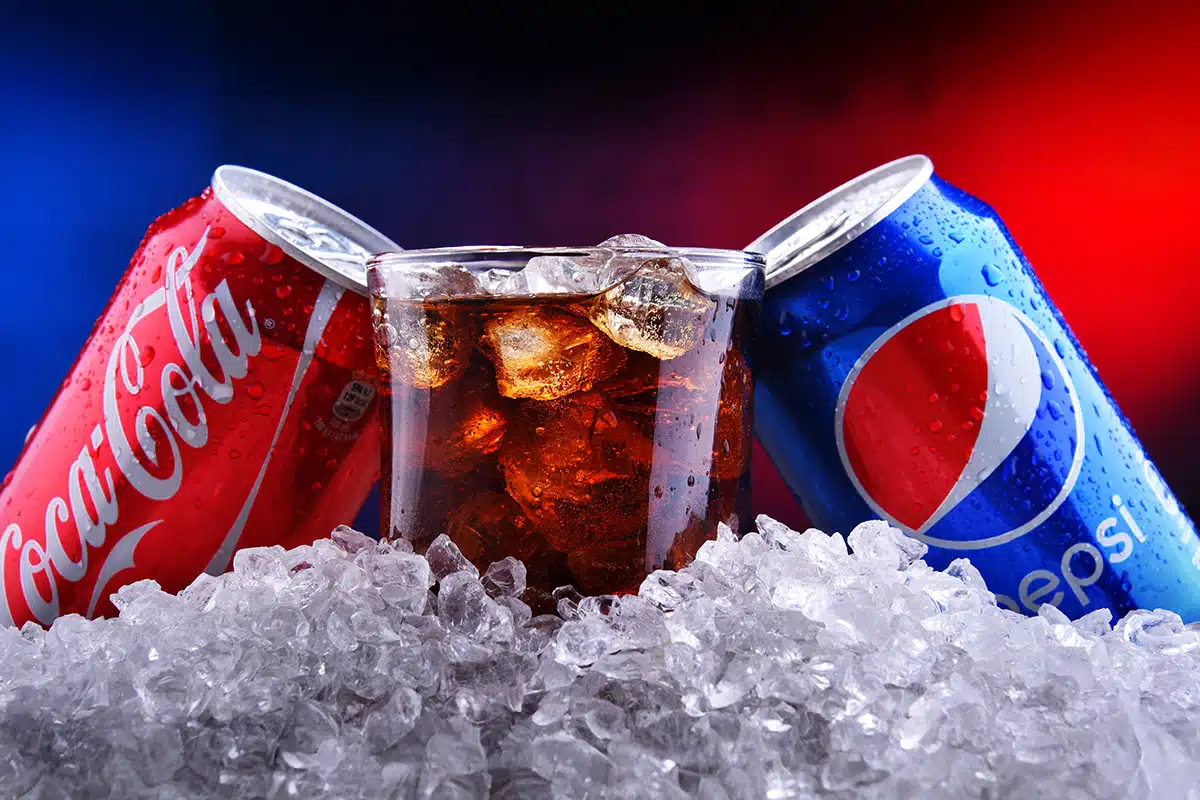
Few business rivalries have been as intense, entertaining and strategically fascinating as the battle between Coca-Cola and Pepsi. For over a century, these two beverage giants have fought for dominance in what has become known as “The Cola Wars.” From early branding battles to the famous Pepsi Challenge and modern digital marketing, their war has shaped the way companies think about branding, advertising and consumer engagement.
This is the story of how two fizzy drinks turned into a billion-dollar battlefield, and what businesses can learn from it.
Act I: The Origins – A Tale of Two Sodas
Coca-Cola’s story began in 1886, when pharmacist John Stith Pemberton invented a caramel-colored liquid and sold it for five cents a glass at soda fountains in Atlanta. It was marketed as a medicinal tonic, but soon, people were drinking it for refreshment rather than remedy.
Pepsi was born seven years later in 1893, created by another pharmacist, Caleb Bradham, who envisioned it as a digestion aid. Originally called Brad’s Drink, it was rebranded as Pepsi-Cola in 1898 to emphasize its cola nut and pepsin formula.
While Coca-Cola had an early head start, both brands would grow into fierce competitors, with strategies that would change the advertising world forever.
Act II: The War Heats Up – Marketing, Endorsements and the Pepsi Challenge
By the early 20th century, Coca-Cola had solidified itself as the leading soft drink. It became one of the first companies to use mass advertising, promoting its signature bottle and reinforcing brand loyalty with slogans like “The Pause That Refreshes.”
Pepsi, meanwhile, struggled through bankruptcies in the early 1900s. But in the 1930s, it made a bold move by offering twice as much soda for the same price as Coke during the Great Depression. This strategy helped Pepsi carve out a market share, appealing to budget-conscious consumers.
The real war began in the 1970s and 80s, when Pepsi launched its most disruptive marketing campaign yet: The Pepsi Challenge. In blind taste tests, consumers were asked to pick between two unmarked cups, one with Coke and one with Pepsi. The results? Pepsi won more often than not.
This campaign shook the industry. Pepsi positioned itself as the cool, youthful alternative, aggressively using celebrity endorsements like Michael Jackson and Madonna. Meanwhile, Coca-Cola, still leading the market, made a critical misstep, introducing New Coke in 1985.
New Coke was a disaster. Consumers rejected the formula, and the backlash forced Coca-Cola to reintroduce the original recipe as Coca-Cola Classic. While it eventually recovered, this moment remains one of the most famous branding failures in history.
Act III: The Battle Beyond Soda – Diversification and Global Expansion
By the 1990s, the battle expanded beyond soda. Both companies diversified their portfolios, acquiring bottled water, energy drinks and snack brands.
- Coca-Cola focused on global expansion, increasing its distribution reach in emerging markets like Africa, Latin America and Asia.
- Pepsi took a different approach, doubling down on snacks by acquiring Frito-Lay, Gatorade and Tropicana, making it a dominant player in the food industry.
Their strategies reflected different business philosophies:
- Coca-Cola: Brand dominance through nostalgia, heritage and a timeless appeal.
- Pepsi: Agility and innovation, using pop culture, younger demographics and a broader product range.
In the 2000s, the war continued in digital marketing and social media. Coca-Cola leaned on emotional storytelling (“Share a Coke” campaign), while Pepsi tapped into sports and music culture, partnering with the Super Bowl and high-profile influencers.
Act IV: Who’s Winning Today?
So, after over 130 years, who is actually winning?
As of today, Coca-Cola still leads in market share, holding about 44% of the global soft drink market compared to Pepsi’s 26%. Coca-Cola is the more valuable brand, but Pepsi’s diversification has made it a stronger overall company in the food and beverage sector.
But the Cola Wars are not over. With health-conscious trends, sugar taxes and rising demand for healthier drinks, both brands are adapting. Coca-Cola is investing in sugar-free and functional drinks, while Pepsi is focusing on plant-based beverages and sustainability initiatives.
Lessons for Small Businesses from the Cola Wars
Whether you run a local shop or a growing brand, there is a lot to learn from the Cola Wars:
Brand loyalty is everything. Coca-Cola has remained dominant because of its emotional connection with customers. Focus on building a brand, not just selling a product.
Disruption works, if you are smart about it. Pepsi shook up the industry with the Pepsi Challenge and celebrity endorsements. Find ways to stand out from competitors.
Don’t abandon your core identity. Coca-Cola’s New Coke failure proves that changing too much, too fast can alienate customers. Evolution is good, but stay true to what makes your brand special.
Diversify, but strategically. Pepsi’s expansion into snacks helped it survive shifting trends. Businesses should explore adjacent opportunities without losing focus.
The battle never ends. Competition drives innovation, marketing creativity and customer engagement. Keep evolving, keep adapting and keep telling your brand’s story.
Closing Thoughts: The War Goes On
The Cola Wars may never truly end, but one thing is clear. This rivalry has shaped modern marketing, branding and business strategy. From nostalgia-driven campaigns to influencer marketing and global expansion, Coca-Cola and Pepsi have set the blueprint for how businesses compete, innovate and thrive.
At Resolution Promotions, we help businesses craft marketing strategies that stand out, even in competitive markets. Need help building your brand’s story? Let’s talk.



